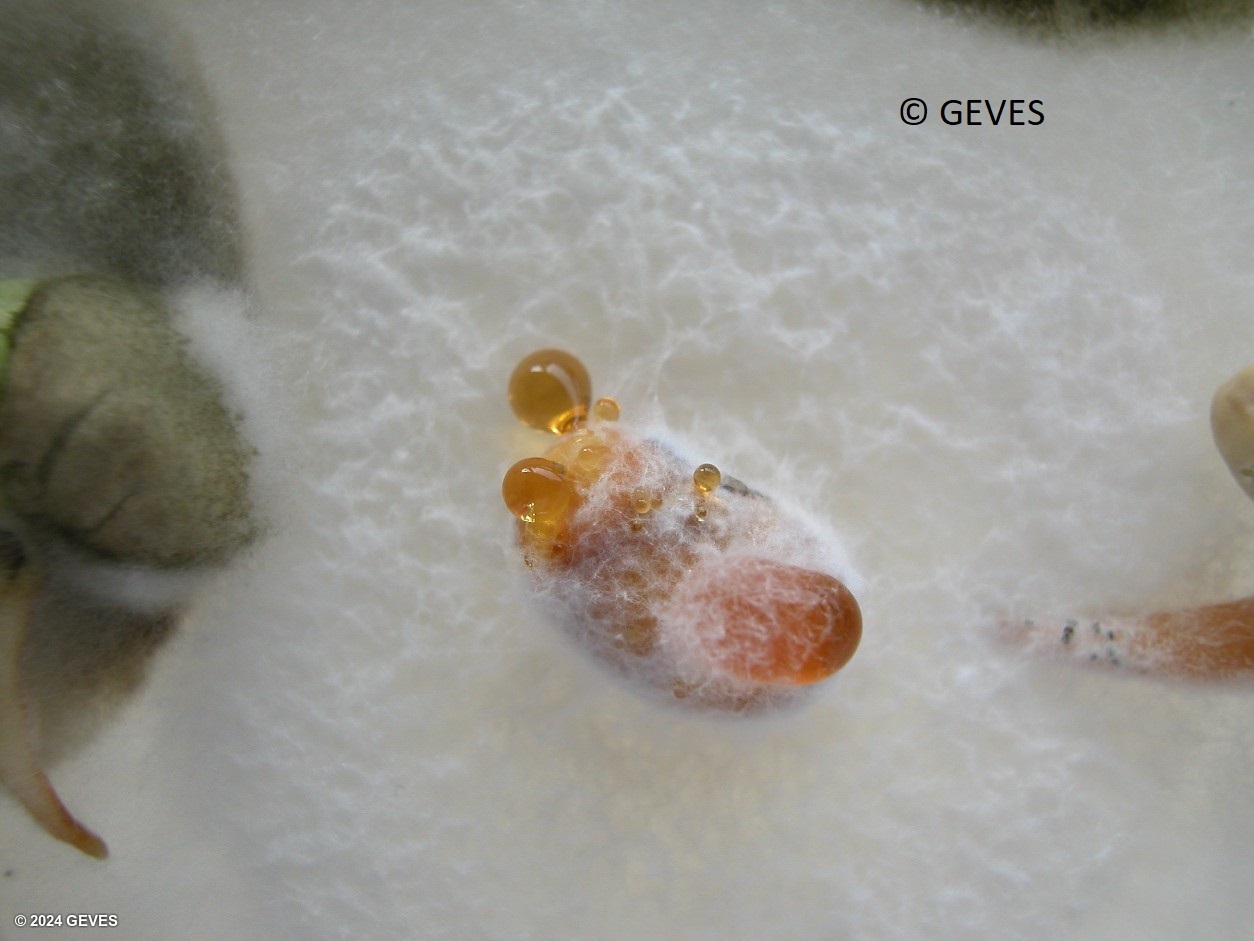Phomopsis longicolla
Overview
|
Scientific name
|
Phomopsis longicolla |
|
Genus
|
Phomopsis |
|
EPPO code
|
PHOPLO |
|
Common name
|
Pod and stem blight |
|
Synonyms
|
Diaporthe longicolla |
Description
ISTA 7-016 gives methodology for detecting pathogens belonging to the Phomopsis complex: Phomopsis longicolla, Diaporthe phaseolorum var. sojae, D. phaseolorum f. sp. caulivorum, and D. phaseolorum var. caulivora.
Infected seeds are usually overgrown by a dense, white, floccose mycelium which often contains black, globose fruiting bodies (pycnidia) and/or black stromatic bodies, by day 7. Pycnidia are usually short beaked, but the length of the beak may vary considerably. Spore exudate usually accumulates as a straw-yellow droplet at the tip of the beak, but occasionaly in the form of a cirrhus. At high magnification two kinds of conidia may be seen. Alpha conidia are hyaline, non-septate, rounded at both ends (although some may have one end more drawn out that the other), straight to ellipsoidal, 4.5-11.0 x 1.5-3.5 μm. Beta conidia are long and needle-shaped, sometimes curned or hooked, hyaline, 7.5-35.0 x 0.8-1.8 μm. The majority of pycnidia produce only alpha conidia, a few produce alpha conidia with some beta conidia, rarely beta conidia are produced alone.
The long-beaked, black, globose perithecia of Diaporthe phaseolorum, the perfect state of Phomopsis phaseoli, are not usually encountered on plated seeds from lots produced in areas free of stem canker. Ascospores are hyaline, 1-septate but may appear to be 3-septate, with 1-2 drops in each half of the spore, which is either ellipsoidal with the ends slighlty pointed and slightly to noticeably constricted at the septum, 4.4-6.3 x 1.6-2.1 μm to 8.6-11.8 x 3.0-3.9 μm, or sometimes broadly fusiform and then often curved with no constriction and obtuse at each end, 7.5-10.5 x 2.0-2.7 μm.

